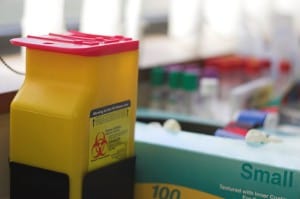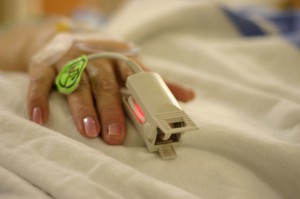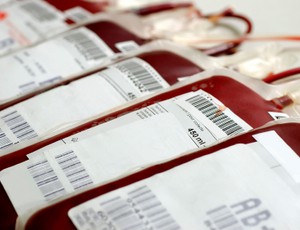CLABSI diagnosis and management what are the challenges

“Although no clear treatment guidelines have been proposed for E. dermatitidis infections, immediate removal of central venous catheters is the key to improving central line-associated bloodstream infections” Itoh et al (2021).
Home phlebotomy program for pediatric patients during a pandemic

“During the initial months of the COVID-19 outbreak, we completed 189 home phlebotomy visits for pediatric hematology and oncology patients” Sisler et al (2021).
SVC occlusion prior to intracranial hemorrhage

“Headaches and neurologic symptoms in hemodialysis patients can herald intracranial hypertension due to central venous occlusion and needs prompt assessment with fistulography” Mirza et al (2021).
Near infrared vein viewer technology performance verified

“Transillumination devices differ in their technical characteristics and performance. The choice of the device should be based on the needs of the particular patient population and the intended use of the device” Dorotić et al (2021).
OPAT for drug use-associated infective endocarditis – Full Text

“Efforts to increase OPAT utilization among patients with DUA-IE could have important benefits for patients and the healthcare system” Ceniceros et al (2021).
Central venous catheter tip navigation in neonates using ultrasound

“Recent guidelines strongly recommend intra-procedural methods of tip location, to increase the cost-effectiveness of the maneuver and to shorten the time between device placement and utilization” Barone et al (2021).
Best IV catheters for apheresis procedures

“The results from this pilot study suggest that 20G fenestrated catheter is non-inferior to 18G standard catheters” Armendariz et al (2021).
Intraosseous access in newborns consideration of alternative sites

“Proximal humeral head and distal femoral end might be alternative IO areas which may lead to further IO puncture sites in neonates” Eifinger et al (2021).
Best intravenous catheter for massive transfusion

“Short, large-diameter catheters provided the greatest infusion rates of massive transfusion blood products for the least pressure” Milne et al (2021).
PICC catheter design innovation impact study proposal – Full Text

“he integration of antimicrobial and hydrophobic catheter materials, and pressure-activated valves, into polyurethane PICCs are innovations designed to prevent infective and/or thrombotic complications” Ullman et al (2021).
Topical ketamine local anesthetic agent for venipuncture pain

“This study showed that local cutaneous ketamine is as effective as EMLA in relieving pain during venipuncture” Heydari et al (2021).
IV complications associated with vascular access – Full Text

“Our study shows that local complications at IV access site are very common with occurrence in more than fifty percent patients” Chaudhary et al (2021).
OPAT experience with liposomal amphotericin B

“L-AMB is associated with significant AEs; however, these results suggest treatment is feasible in the outpatient setting with close monitoring” Burnett et al (2021).
How to manage home parenteral nutrition complications

“This study aims to assess and characterize the situation of patients with HPN focusing on prevalence of catheter-related complications and mortality” Reber et al (2021).
Peripherally inserted central catheter-associated endocarditis – Full Text

“We present a case of peripherally inserted central catheter-associated Nocardia nova endocarditis in a patient who had been receiving intravenous antibiotics for the management of chronic Lyme disease” Njie et al (2021).
Analysis of bleeding events after central venous catheter placement

“Major bleeding complications following CVC placement in TTP is uncommon and most likely related to technical challenges” Haque et al (2021).
Cost of central venous catheter training simulation

“The aim of this study was to perform a value analysis of published central line SBE and develop a refined method of studying central line SBE” Iglesias et al (2021).
Comparing central venous blood gas to arterial blood gas

“Central venous blood gas (VBG) is a potentially more accessible alternative to ABG sampling” Chong et al (2021).
Vascular access device securement for oncology patients

“Living with a chronic illness requiring frequent infusions is difficult enough-worrying about the device being dislodged should not be an additional stressor” Hawes (2021).
Infusion set replacement interval study on CRBSI – Full Text

“Infusion set use can be safely extended to 7 days with resultant cost and workload reductions” Rickard et al (2021).
Rapid Central Vein Assessment protocol to avoid venous cut-down

“We aimed to report on CVC in a 5-year-old child who had previously undergone bilateral internal jugular venous access by the open venous cut-down technique, in order to highlight the importance of performing the Rapid Central Vein Assessment protocol” Uzumcugil et al (2021).
Catheter management strategies for suspected CRBSI

“The objective of this study was to determine the incidence, risk factors, and mortality attributable to CRBSIs in those patients” Zhong et al (2021).
Midline catheters as an alternative to central catheter placement

“Midline catheters allow for greater duration of access when compared with PVCs and avoid the critical complications associated with CVCs” Carr et al (2021).
New starter induction improves first time vascular access success – Full Text

“To assess the impact of a prolonged induction period on the technical abilities of interns embarking on their clinical careers” Foley et al (2021).
Biofilm and central catheter-related bloodstream infections

“The use of high-dose antiseptics or antibiotics for long durations inside the catheter and hub (antibiotic/antiseptic lock) can suppress biofilm” Wolcott (2021).
Use of dry dressings for central venous access devices to decrease CLABSI

“In this pre-post study, a simple change in dressing type was implemented, resulting in a significant reduction in the CLABSI rate” Paquet et al (2021).
Vascular access care in patients with multimorbidity

“Multimorbid patients with DIVA have a higher rate of complications as well as requiring more catheters and more placement attempts” Armenteros-Yeguas et al (2021).
Central venous catheter care mobile phone application for graduate nurses

“To develop and test a mobile phone application (app) for graduate nurses on the use and care of central venous catheters” Huang et al (2021).
Tunneled PICC placement in adult and pediatric population – Full Text

Abstract: Vascular access procedures are crucial for the management of various critically ill pediatric and adult patients. Venous access is commonly performed in the form routine as well as tunneled peripherally inserted central catheters (PICC). These venous accesses are commonly used in emergency, surgical as well as ICU settings, for various infusions, total parenteral nutrition, […]
Double-checking and medication administration errors – Full Text

“Primed double-checking was highly prevalent but compared with single-checking conferred no benefit in terms of reduced errors or severity” Westbrook et al (2021).

